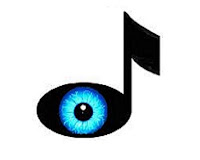Along with Aural - Sight reading is one of the most dreaded parts of an ABRSM exam.
In my experience, it seems that this section of the exam is not prepared as much as, for example the pieces and scales. Added to this, you have probably been playing the same three pieces over and over again for the last few months and have virtually memorised them, and in so doing you are not really “reading music” every day. To get better at sight reading you need to incorporate some music you have never seen before into your practice every day.
How should you practice sight reading? Again, in my experience, most students focus primarily on getting the notes the correct pitch at the expense of keeping the beat going. If you look at the marking criteria for a sight reading test, the FIRST thing that is mentioned for a distinction is, “Fluent, rhythmically accurate” followed by “Accurate notes/pitch/key”.
Then there is the “musical detail” such as dynamics and articulation. These also will get you more marks in an exam and finally in the marking criteria for a distinction there is mentioned “Confident presentation”. A sight reading test is an assessment on how well you can convey the music as a whole performance, NOT if you can recognise the pitches A, B, C etc - that is a theory exam!!
In an exam you are given up to half a minute to prepare. Now at this point, most people will tentatively start to try and work out the pitches of the first few bars. This is a waste of your 30 seconds. Try and get the rhythm in your head, look out for dynamics and articulation marks, try and get a sense of the music as a whole.
I would practise sight reading with a metronome, maybe set to a slowish tempo if necessary and keep going whatever. If you miss a note, DON’T go back and correct it, you’ll only upset the flow and rhythm of the music and this effectively then counts as a 2nd mistake. You can’t erase the first mistake, and the examiner is not interested if you can improve on your wrong note, he wants to hear a performance of the music as a whole, which conveys as best you can, the character of the piece.
With this in mind, you might find helpful, a playlist called "Sight reading trainer" which I have prepared on my YouTube channel, in which you get a few seconds to look at the piece and then you need to play along with the audio which forces you to keep time.



No comments:
Post a Comment
Comments with external links not accepted and WILL BE DELETED